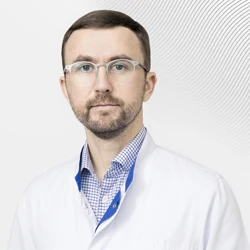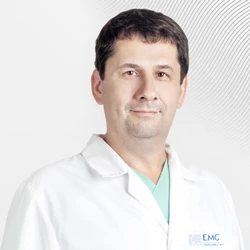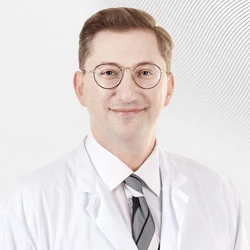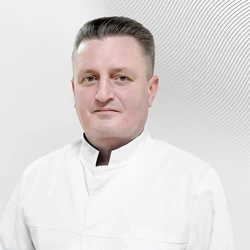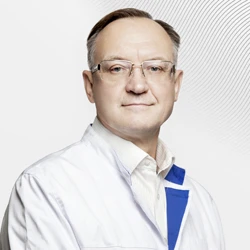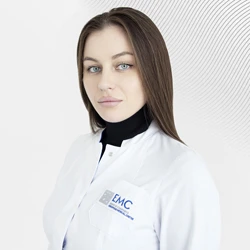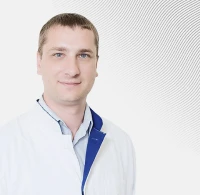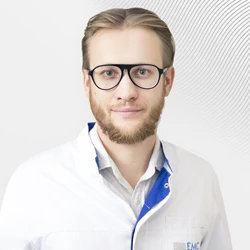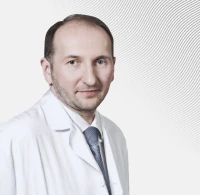Treatment of scoliosis
Scoliosis is a diverse group of diseases that cause curvature of the spine in the frontal and sagittal planes. The EMC Clinic in Moscow provides all types of treatment for this disease.
Advantages of EMC Scoliosis treatment



Causes of scoliosis
The following factors lead to scoliosis:
- Anomalies of vertebral development and formation during pregnancy and early childhood
- Hereditary factors
- Arnold-Chiari Anomaly
- Professional sports (for example, weightlifting and all types of wrestling)
- Lifestyle (work involving heavy physical exertion and lifting heavy loads)
Types of scoliosis
The rarest, but most severe type of this disease is congenital (congenital) scoliosis. In this case, there is an anomaly in the development and formation of vertebrae in utero. Children are born with this disease, which begins to progress over time and leads to severe curvature of the spine.
Idiopathic scoliosis is the second most common. This disease occurs during the period of accelerated skeletal growth and in some cases progresses. With this type of curvature, the patient has a genetic predisposition to spinal deformity.
In most cases, scoliosis does not require surgical treatment of the spine and a conservative method is chosen.
Surgical treatment of scoliosis is most often required at 3-4 degrees of the disease. In this case, patients often develop a hump, which requires cosmetic correction of the curvature.
Before sending a child for surgery, doctors determine from the pictures whether the period of active bone formation has ended (these indicators are individual for each person). If the growth continues, it is better to postpone the operation, as the risk of deformation and breakage of the installed metal structure increases.
Methods of scoliosis treatment
Surgical treatment
To treat scoliosis surgically, doctors install extended metal rods in the spine, which straighten it and hold it in an even physiological position. In this case, the frontal and sagittal body imbalances are corrected.
Before surgical treatment, the EMC performs a comprehensive examination of the patient and his spine. Specialists carry out accurate calculations and strive to ensure that the metal rod in the spine is as low as possible (in accordance with the anatomical features of the patient), but at the same time performs a corrective function in scoliosis. This is necessary to maintain the maximum number of movable segments.
During surgery for the treatment of scoliosis, the patient often experiences significant blood loss. It is possible to avoid using donated blood: the EMC clinic is equipped with a Cell Saver device that collects blood during surgery and passes it through special filters. This makes it possible to return the patient's own blood, while preserving all its important components and minimizing the risks of complications after transfusion.
Conservative treatment of scoliosis
For scoliosis, comprehensive conservative treatment is important – massage, therapeutic gymnastics classes with rehabilitologists and physical therapy specialists. The patient also wears a corset that holds the spine in the correct position. With regular wear, many people manage to achieve good cosmetic and functional changes and limit themselves to conservative treatment.
Symptoms
- Curvature of the spine in the frontal plane by 10 degrees or more
- Progressive deformity of the back (curvature of the spine is noticeable without additional research)
- Pain syndrome in the back (muscles are in constant tension and start to hurt)
- Shortness of breath during any physical exertion (due to pressure on the lungs)
- Spinal cord injury in severe spinal deformities
Diagnosis of scoliosis
In order to diagnose scoliosis and make a competent treatment plan for curvature, you need to take X-rays in different planes of the spine (images with lateral inclinations to assess mobility or rigidity of the deformity).
Before surgery, it is important to have a computed tomography (CT) scan of the spine: this study allows you to calculate the required length and thickness of metal screws that will match the anatomical features of the patient.
Magnetic resonance imaging (MRI) in scoliosis helps to identify neuromuscular diseases that paralyze the processes of the nervous system, and congenital neurological diseases that lead to curvature. During an MRI scan, it is important that the study covers all parts of the spine and the posterior cranial fossa. This is necessary in order to rule out an Arnold-Chiari anomaly (one of the possible causes
of spinal curvature).
Rehabilitation period
On the first day after surgery at the EMC, patients begin to perform a set of exercises that promotes rapid rehabilitation and reduces the likelihood of blood clots. Patients also do breathing exercises to avoid lung complications. The suture in the spine is large enough, so surgeons monitor its condition daily. After 10-14 days, the stitches are removed, and the patients are referred to Rehabilitation center in Zhukovka, where highly qualified specialists from various fields They help both adults and children recover quickly. Rehabilitation is aimed at relieving the spine and supporting structural elements.
Contraindications for surgery
Before prescribing surgical treatment, doctors evaluate the anatomical feasibility of the operation individually for each patient.
It is also important to examine the condition of the skin in the back area – if the patient has ulcers or psoriatic plaques, then there is a high risk of suppuration after surgery. In this case, you first need to heal the skin, and only then perform surgery to correct the curvature of the spine.
Surgery is also impossible for some somatic diseases of the patient (most often they are elderly people). In the EMC, the decision on surgical treatment for spinal curvature is made by a council of doctors of different categories (cardiologists, endocrinologists, anesthesiologists, intensive care specialists and other specialists).
Why the EMC
The first and only clinic in Russia, created in the image of the world's leading clinics
EMC is a multidisciplinary center offering patients a high level of medical services and a personalized approach
Worldwide recognition and awards
 Learn more
Learn more
Worldwide recognition and awards
 Certificates and licenses
Certificates and licenses
Make an appointment for a consultation
Specify your contacts and we will contact you to clarify the details
Reviews
and new products of the EMC
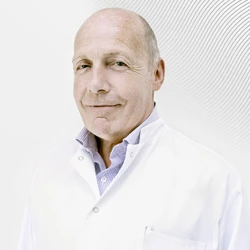
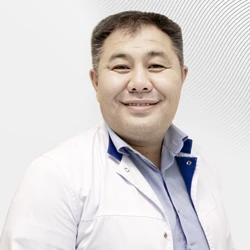
.webp)
